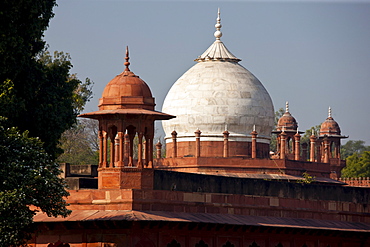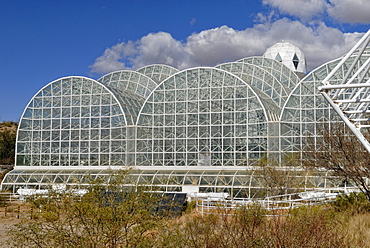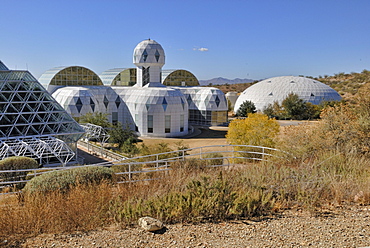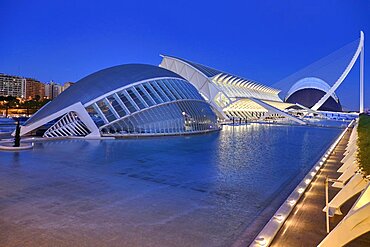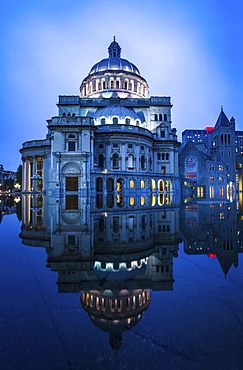Results
5 results found
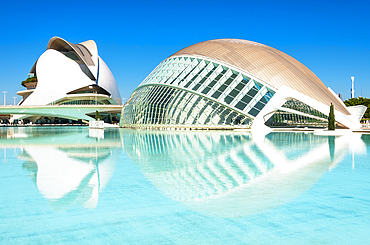
Reflections of Palau de les Arts Reina Sofia (Queen Sofia Palace of the Arts) and Museu de les Ciencies Principe Felipe (Principe Felipe Science Museum) of Ciudad de las Artes y las Ciencias (City of Arts and Sciences), Valencia, Spain, Europe
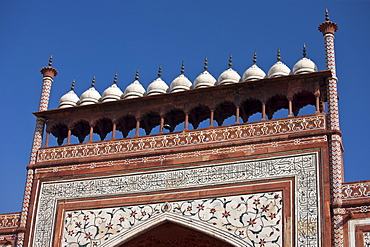
The Great Gate, Darwaza-i rauza, of The Taj Mahal Complex, southern gateway entrance, Uttar Pradesh, India
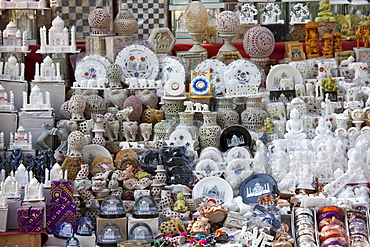
Taj Mahal souvenirs on sale by The Great Gate, Darwaza-i rauza, of The Taj Mahal Complex, southern entrance, Agra, India
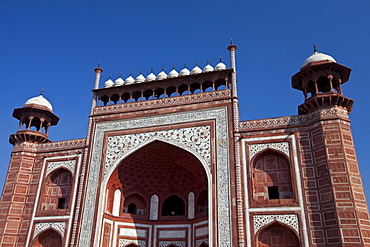
The Great Gate, Darwaza-i rauza, of The Taj Mahal Complex, southern gateway entrance, Uttar Pradesh, India

The Belt of Orion with the Horsehead Nebula at botton, the dark nebula set in the bright emission nebula IC 434. The nebula at left of the Zeta Orionis (aka Alnitak) is the Flame Nebula, NGC 2024. The reflection nebula at upper left is the M78 complex with NGC 2071. The other Belt stars are Alnilan (centre) and Mintaka (upper right). The field contains a wealth of other blue reflection and red emission nebulas.

A mosaic of the region around the centre of the Milky Way in Sagittarius and Scorpius. The field takes in the Milky Way from the Cat's Paw Nebula at bottom edge to the Eagle Nebula at top left. In between from top to bottom are the Swan Nebula (M17), the Small Sagittarius Starcloud (M24), the Trifid and Lagoon Nebulas (M20 and M8) and the open clusters M6 and M7. The prominent dark nebula at right is the large Pipe Nebula (B78) with the small Snake Nebula (B72) above it. The whole complex is visible to the naked eye as the Dark Horse.

The complex area of clusters and nebulosity in central Auriga, including: M38 the Starfish Cluster and its smaller companion cluster NGC 1907; the emission/reflection nebulas NGC 1931, IC 417, IC 410 and IC 405 (from right to left here). Magenta and cyan (from emission and reflection components) IC 405 at right is the Flaming Star Nebula. Between IC 405 and IC 410 is the asterism known as The Little Fish.
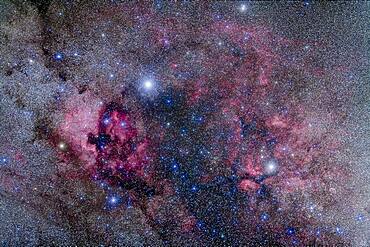
Nebulosity in the heart of Cygnus the Swan, including the North America Nebula and Pelican Nebula at left (NGC 7000 and IC 5070) and Gamma Cygni complex at right (IC 1318). The Crescent Nebula (NGC 6888) is at lower right. This is a stack of 5 x 4 minute exposures at f/2 with the 135mm lens and modified Canon 5D MkII at ISO 800, plus another three similar exposure images but taken thru the Kenko Softon filter for the star glows. Taken from home Sept 10, 2013.
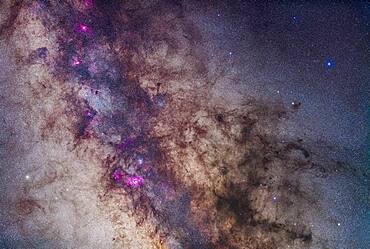
A mosaic of the region around the Small Sagittarius Starcloud and Dark Horse dark nebula complex. The field takes in the Milky Way from the Lagoon Nebula at bottom to the Eagle Nebula at top left. In between from top to bottom are the Swan Nebula (M17), and the Small Sagittarius Starcloud (M24). Flanking the bright M24 starcloud are the large open clusters M23 (right) and M25 (left). At bottom left is the M22 globular star cluster. The prominent dark nebula at right is the large Pipe Nebula (B78) with the small Snake Nebula (B72) above it. The whole complex is visible to the naked eye as the Dark Horse.
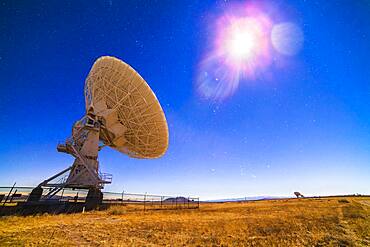
One of the 27 antennas of the Very Large Array (VLA) radio telescope complex in New Mexico (with others in the distance at lower right) illuminated by moonlight, on December 13, 2013, peak night for the Geminid meteor shower. A single exposure of 30 seconds with the Rokinon 14mm lens at f/2.8 and Canon 5D MkII at ISO 800. Orion is rising a lower centre. The Moon is the bright object at upper right. The Pleiades and Hyades are above centre.
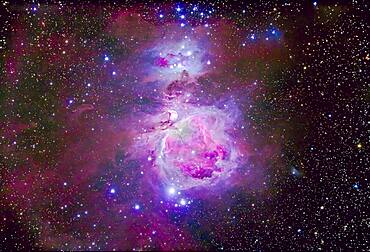
The Orion Nebula complex consisting of M42, M43 and the reflection nebula area known as the Running Man Nebula, NGC 1973-5-7. NGC 1981 is the blue star cluster at top north edge. North is up, though in the sky from Australia where this was shot the object appeared upside down compared to this northern-centric view.
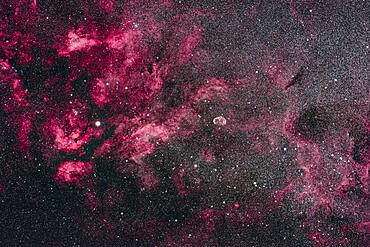
This is the central area of Cygnus and its bright Milky Way starcloud surrounded by red nebulosity. At left is the star Sadr (gamma Cygni) with the complex of nebulosity catalogued as IC 1318. At centre is the distinct Crescent Nebula, NGC 6888, a expanding nebula created by winds from a hot Wolf-Rayet star. At bottom left is the star cluster Messier 29, though looking a little lost in the rich starfields here. At top is the cluster IC 1311, looking more obvious than M29 but not observed visually and included in the NGC catalog. Odd. At far right are the large and loose star clusters NGC 6883 and NGC 6871, the latter an obvious binocular sight. To the left of Sadr is the small cluster NGC 6910. The dark nebulas B145 and LDN 862 are at right. The small emission nebula at bottom is Sharpless 2-104.
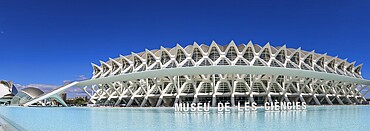
Panoramic photo Futuristic, unique and spectacular modern architectural building science museum Prinz Philip (Museu de les Ciències) with large text MUSEU DE LES CIENCIES, with blue sky in the background on the water in the ultra-modern science complex in a landscaped park Ciudad de las Artes y de las Ciencias, Quatre Carreres, Valencia, Autonomous Community of Valencia, Province of Valencia, Spain
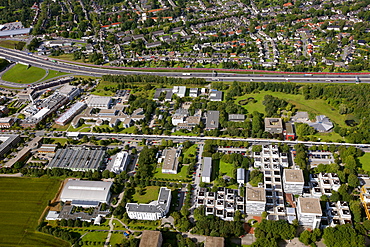
Aerial view, Technology Park Dortmund, University of Dortmund, the Fraunhofer Institute, Dortmund, Ruhr area, North Rhine-Westphalia, Germany, Europe
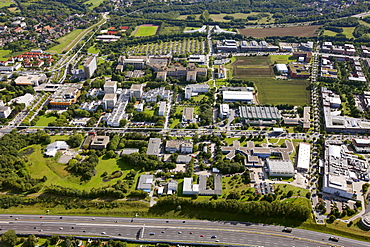
Aerial view, Technology Park Dortmund, University of Dortmund, the Fraunhofer Institute, Dortmund, Ruhr area, North Rhine-Westphalia, Germany, Europe
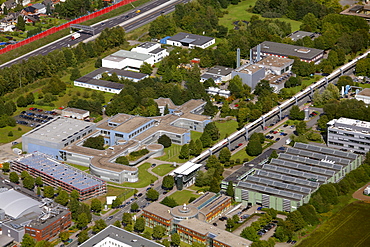
Aerial view, Technology Park Dortmund, University of Dortmund, the Fraunhofer Institute, Dortmund, Ruhr area, North Rhine-Westphalia, Germany, Europe
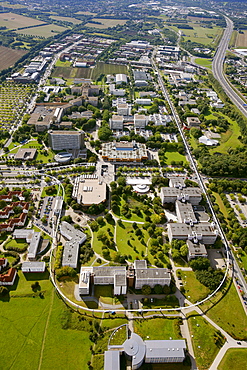
Aerial view, Technology Park Dortmund, University of Dortmund, the Fraunhofer Institute, Dortmund, Ruhr area, North Rhine-Westphalia, Germany, Europe
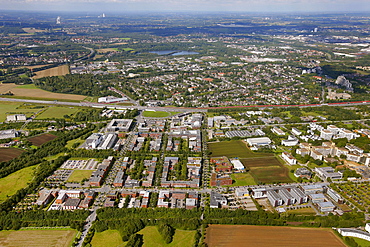
Aerial view, Technology Park Dortmund, University of Dortmund, the Fraunhofer Institute, Dortmund, Ruhr area, North Rhine-Westphalia, Germany, Europe
